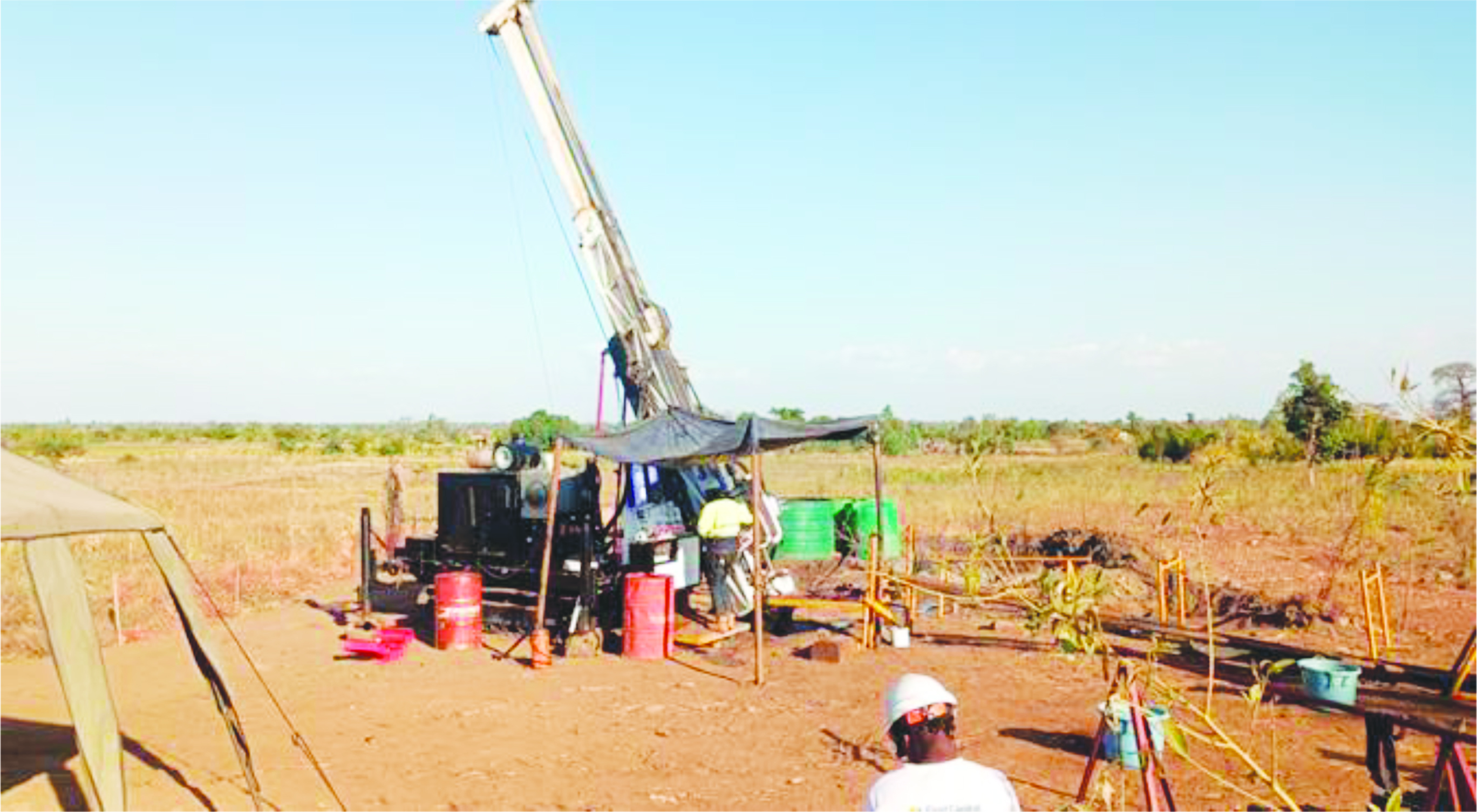
Mining
REEs verified with maiden diamond drill hole within Chilwa carbonatite system
October 13, 2025 / Marcel Chimwala

Drilling ongoing at the Mpyupyu anomaly
ASX-listed Chilwa Minerals says assay results received for the first hole at the Mposa geophysics rare earth elements (REE) anomaly indicate elevated to 1,039ppm Total Rare Earth Ore (TREO) values in clay and sediments and saprolite to depths of up to 80m.
Cadell Buss Founder and MD for Chilwa Minerals explains in a statement that the anomalies, considered potential REE mineralisation targets, were characterised by Thorium, Potassium, magnetic signatures, and zoned intrusive bodies. These targets have undergone ground verification through mapping, soil geochemistry, and rock-chip sampling, with subsequent diamond drilling undertaken for further evaluation.
Buss reports that a total of 1,008m was drilled at six drill holes on the Mposa geophysics anomaly, with drilling moving to the Mpyupyu area in the first week of August.
Analysis was carried out on the entire drill column, including up to 80m of sediment, clay and saprolite above the consolidated bedrock. TREO values are elevated through the entire 80m thick horizon indicating the scale of the REE potential within the Lake Chilwa Basin catchment.
Detrital sediments from metamorphosed country rocks and the later Chilwa Alkaline Province rocks (host rocks to numerous REE deposits including Kangankunde, Songwe Hill, and Tundulu) have infilled the Lake Chilwa Basin over millennia, creating a substantial deposit of lacustrine clays surrounding the lake, as well as the heavy mineral sands deposits being developed by Chilwa on Lake Chilwa’s western shoreline.
With no previous diamond drilling in the immediate vicinity, the Company has assayed the entire stratigraphy, acquiring information on the provenance of sediment deposited in the basin as well as overall understanding of the relationship between the Company’s mineral sands deposits and potential rare earth targets around the lake. A saprolite interval, interpreted from 35m to 82m also carries elevated TREO grades, relative to underlying bedrock.
Buss says although the TREO grades in the sediments and cover may warrant further investigation as an ionic adsorption clay hosted REE deposit, the Company does not plan to conduct leach testing at this time. Instead, the focus remains on identifying Carbonatite-hosted or associated REE deposits, similar to neighbouring projects like Kangankunde.
The initial drilling program for the Mposa anomaly overall has now been completed with a developed brecciation observed at multiple intervals.
Buss, comments: “This update represents yet another significant step for the company - and perhaps the most exciting to date.”
“Since receiving the results of the airborne radiometric survey in 2024, we have been confident that we have identified a substantial critical minerals asset.”
“The importance of our recent HMS announcement, which relates to a ‘rare earth mineral concentrate as a potential by-product’ of the HMS assemblage, has provided the company increased confidence regarding the presence of additional Rare Earth Elements. These results further substantiate our geological analysis.”
“We have now established a systematic exploration drilling process with core logging and sample prep at our dedicated facility in Zalewa and have a clear path ahead with a further 46 geophysics anomalies still to test.”
“The final soil sample results of all 47 targets (30 have been reported and 17 are pending ) once received, will enable us to rank targets by relative prospectivity and guide subsequent future exploration drilling.”
“We are also impressed by results to date at the second target (Mpyupyu) tested with notable fenitisation of rocks, a clear carbonatite signal in rocks near surface, as well as a barite dyke and chalcopyrite mineralisation both indicative of late stage sulphide enriched fluids in a carbonatite related hydrothermal system, and we eagerly await the assay results of this first hole.”































